![]() The information provided by our expert should not constitute a diagnosis of your condition. Always consult a medical practitioner or healthcare provider for a formal diagnosis. By making use of this content, you agree that ConceiveEasy and the expert assume no liability.
The information provided by our expert should not constitute a diagnosis of your condition. Always consult a medical practitioner or healthcare provider for a formal diagnosis. By making use of this content, you agree that ConceiveEasy and the expert assume no liability.
Isn’t it just amazing that we live in such an exciting day and age where we have so many options available to women who are seeking fertility treatments and help with fertility medications on their fertility journey? Claim Your 20 Free Pregnancy Tests – Click Here
Just a few generations ago, women who had trouble getting pregnant had very few options to help them along on their journey. It was very much just the “luck of the draw” (or lack thereof) when it came to trying to conceive, and their really were not many options available.
However, now, in this very scientifically advanced time in which we live, there are tons of options out there for couples who want to try to conceive.
There are fertility drugs and treatments for both men and women, and there are treatments that range from simple over the counter fertility supplements and vitamins to full on, fertility treatments done at a fertility clinic.
Today, we are going to go over the vast world of fertility medications, drugs and treatment options so that women can be more informed about what their options are when it comes to these kinds of things.
Read on to find out more info and get more knowledge about fertility drugs and treatments.

There are so many different fertility treatments and medications out there, it can be hard for women to determine which ones might be right for her particular case.
The first thing that women need to take into consideration is how long they have been trying to conceive, and their age at the time of trying to conceive. This is because age is a very important factor in female fertility.
Women over age 35 will usually, as a group, take a longer amount of time to get pregnant.
Women under age 35 will usually have an easier time getting pregnant.
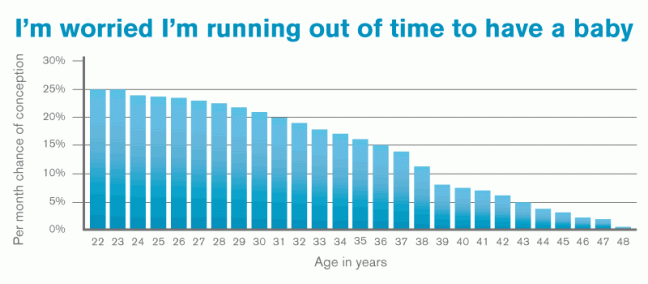
Some women might not be interested in seeking help from a fertility doctor or fertility clinic, and might want to only get pregnant through natural means. There are many different things to take into consideration when it comes to which type of fertility medication or treatments to try.
For the most part, doctors usually recommend that women who are under 35 years of age go ahead and try to conceive on their own for one full year before seeking help from a fertility doctor or clinic.
For women who are over 35 years of age, and might have a little bit of a harder time getting pregnant, they are recommended to try to conceive on their own for only six months before seeking fertility help.
This will have some say in what fertility medications or treatments that women will try first, because at first, women are urged to try to conceive on their own without medical intervention.
This is because around 90% of women will get pregnant on their own naturally within one year of starting to try to conceive.
For this reason, we will start off with over the counter fertility medications and supplements that do not require a doctor’s prescription. We will start there and work our way up to the more medically involved fertility medications and treatment plans.

For women who have not yet reached the level of trying to conceive where they need to see a fertility specialist or start taking prescription fertility medications, there are quite a few fertility supplements and vitamins that can be used in order to boost fertility and increase chances of trying to conceive naturally.
Let’s go over a few of those options for women who are in that particular stage of trying to conceive and talk about a few of the best supplements and vitamins out there that can be good choices for these women.

1. Over The Counter Option: Prenatal Vitamins
While it might sound a little bit crazy to recommend prenatal vitamins to a woman who is not even pregnant yet, doctors say that in some cases, prenatal vitamins can give women’s fertility a real boost and help her to get in the best shape for trying to conceive.
The truth of the matter is, most of us don’t eat right or get the proper nutrition in our daily diets. This can leave lots of nutritional gaps, where our bodies are not getting the proper nutrition for daily life.
In turn, this can make it much more difficult to conceive, since women are barely even getting the proper nutrients for themselves, much less to conceive and grow a healthy baby. This is where prenatal vitamins can come in handy.
By taking an over the counter prenatal vitamin every single day, women are protecting themselves from nutritional failure and are also helping to build their bodies up to a place where they will be at their most fertile.
Another added bonus is that if a woman does happen to get pregnant while already taking a daily prenatal vitamin, her unborn baby will already have protection against neural tube defects and other issues.
This is because some of these issues can be prevented by taking a prenatal vitamin (and getting enough folic acid), but by the time most women find out they are pregnant and start taking a prenatal vitamin, the damage is already done.
This is why it is so very important for women to start on a daily vitamin with plenty of folic acid well before they even get pregnant.

2. Over The Counter Option: Fertility Blends
Another great option for women who are not yet at the point of seeing a fertility doctor or getting fertility treatments is to try yet another great over the counter option. This time, we are going to be talking about fertility blends.
Fertility blends are sort of like vitamins, in that they contain a combination of different ingredients to help support a healthy reproductive system and give women a great fertility boost.
However, instead of containing vitamins and minerals, fertility blends like ConceiveEasy contain carefully measured out dosages of some of the most potent and powerful natural fertility herbs that are out there.
ConceiveEasy is just such a great option for many women, and the fact that it can be obtained online and without the need for a doctor’s prescription really makes it even better!
Herbal fertility medicine has been used for hundreds of years, and many women swear by these natural herbs and herbal derivatives as the key to boosting fertility and being able to get pregnant.
Whether you are a woman who suffers from irregular periods, heavy periods, no ovulation, endometriosis, ovarian cysts, recurring miscarriage, fibroids, or any of a ton of other fertility related issues, there is an herbal remedy out there that can help to fix the situation.

However, getting started with herbal fertility medicine can be a bit overwhelming, as there are so many different things to learn and different herbal remedies to combat different problems and issues.
Also, different herbal remedies need to be taken in different dosages and at different time during a woman’s cycle. It can all be a bit overwhelming, but this is where fertility blends can come in handy, since all of the herbal ingredients are already measured out and combined into one easy to take capsule.
Super easy, just take one a day like a regular vitamin.
Fertility blends can be really helpful for women who are just getting started on their trying to conceive journey and are in between doing “nothing” and going to seek help from a fertility doctor.
The best part is you do not need a doctor’s prescription to get these, and you can even order them online and have them delivered straight to your home! Easy peasy!
Women who are trying to conceive can even combine the use of fertility blends and prenatal vitamins for the best possible fertility benefits.
In a nutshell, fertility blends are one of the only “fertility medications” that are available for women to try without a doctor’s prescription, and it is pretty clear why they are so very popular for women who are trying to conceive a baby.

Once a woman has been trying to conceive for a certain amount of time (either 6 months or one full year, depending on her age and circumstances), it will eventually be time to visit a fertility doctor in order to get some additional help.
Some women choose to see their normal family doctor first and then be referred on to a fertility doctor for additional help. Once a woman begins seeing a fertility doctor, the doctor will meet with the woman (and sometimes her partner as well).

Medical histories will be taken, and testing will be done. Usually the first tests that will be done at a fertility doctor involve simple blood tests, but sometimes doctors might order ultrasound tests or certain dye tests to see how things are working in a woman’s reproductive system.
It will be after all of this is done, and all of these tests have been completed, that doctors will be able to better understand what is going on in a woman’s body and reproductive system, and will therefore better be able to help assist her in getting pregnant.

If, during the initial doctor’s appointments and workups, doctors see that a woman has problems with ovulation, or problems with related issues, it might be time to get her started on prescription medications.
It might sound a little bit scary, being called “fertility drugs,” but the first steps in fertility medication are not really that scary at all.
In fact, women might find that taking some fertility drugs is even easier than taking a daily birth control pill, isn’t that crazy?
There are several different types of fertility medications that women might be started on when they are suffering from fertility issues. We are going to go over the most common and important types of fertility medications in this article so women will be able to have some knowledge of them if they do find themselves in a situation where these fertility drugs are prescribed to them.
1. Prescription Medications: Clomid
We will start with the most widely known and commonly used prescription fertility medication, and that is Clomid. Clomid is a prescription fertility medication that has been used for close to forty(!) years.
Initially, in its first stages, Clomid was developed to help women who were not ovulating properly, and that is still what it is used for today.
Clomid can be very helpful in women who suffer from anovulation, where their bodies do not produce or release mature eggs on their own.
Clomid can also be helpful in women with certain fertility issues such as PCOS, or PolyCystic Ovarian Syndrome, which is a very common fertility issue. Sometimes, Clomid is even used in women who have unexplained infertility, or fertility problems that doctors just quite simply can’t figure out.
In other cases, women who ovulate normally on their own will be prescribed Clomid in order to stimulate extra follicles, or to help more than one egg to be released.
Clomid is often the “first line of defense” when it comes to fertility medications.
This is because it has very good success rates, and not very many adverse side effects. The really interesting thing about Clomid is that it can be prescribed by a gynecologist and does not have to be prescribed by a fertility specialist.
This can make it much easier for women to get than other fertility treatment methods. This makes it a great first choice for women with fertility issues.
When Clomid is prescribed for a woman with a fertility issue, it is very important that the timing is correct in taking the drug. This can make all the difference and it is a very important part of the process, if not the single most important part.
Women will need to be closely monitored when they are getting ready to take Clomid, to make sure that it is given at exactly the right time of a woman’s cycle. Timing is everything when it comes to this popular fertility drug.
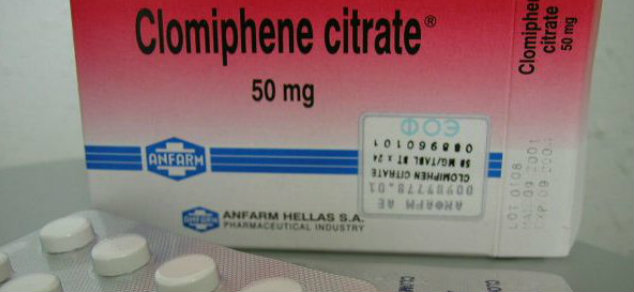
Usually, Clomid is taken in 50mg pills, once per day. The unique thing about Clomid is that it does not have to be taken every single day. In fact, Clomid is only taken for three to five days during a woman’s cycle.
It is very strange that a medication taken for so little time can be so effective and helpful for women suffering from fertility problems, but it’s true!
Some doctors recommend that women start Clomid on day three of their menstrual cycle and follow it through day seven, but other doctors have their patients take the drug from days five through nine of their cycle.
Both of these methods have been proven to be equally effective, so this really just comes down to doctor preference. That’s how simple Clomid is!
Just one pill, once per day, for five days.
Doctors usually like to start women off with around a 50 mg dosage of Clomid. If that does not seem to be effective, doctors can up the dosage a bit, but higher dosages have been proven to not be very helpful.
After a woman takes Clomid for the five days in the beginning of her cycle, she will need to be closely monitored by her doctor to see if the medication worked properly.
Usually, Clomid works and works very well. In fact, Clomid is successful in somewhere around 80% of cases.
It is important to remember that this does not mean that 80 percent of women who take Clomid will wind up pregnant, but that 80 percent of women who take Clomid will end up ovulating.
Clomid’s job is simply ovulation, the rest of the process is up to the couple!
It’s super important for women to know when their most fertile days are when taking Clomid so that they can plan to have sex when they are ovulating.
Ovulation predictor kit tests are a woman’s best friend when she is taking Clomid!
Some women will receive a “trigger shot” or an injection of hCG during their cycle, which will literally tell a woman’s body to ovulate at a certain time. For these women, doctors will give them specific instructions on when will be the best time to have sex for the best results.
Clomid is usually very well received by most women. It does not have many negative side effects, and the ones that it does have are well handled by most women and are not too bad.
Something kind of funny and ironic is that most of Clomid’s side effects are actually also symptoms of pregnancy, so it’s kind of like Clomid is getting a woman ready for her pregnancy in more ways than one!
Some of the most common side effects of Clomid include things like nausea and upset stomach, fatigue and overall tiredness, tender and swollen ovaries (which can translate to bloating, weight gain, and abdominal pain), and breast tenderness.
Other side effects can include problems sleeping, headaches, mood swings, anxiety and vaginal dryness. As you can see, most of these side effects would be considered minor annoyances rather than real problems, and they are usually very easily handled by most women who take Clomid.
I guess you could say that the side effects of Clomid definitely outweigh the benefits of the drug.
We can’t talk about Clomid without at least mentioning Clomid twins. Chances are, if you have been reading up on trying to conceive, you will have heard the term “Clomid Twins.” This is because women who take Clomid do in fact have a greater chance of conceiving twins than women who conceive naturally.
This is because Clomid stimulates the ovaries, and sometimes instead of releasing just one egg, Clomid will cause the body to release two eggs (and sometimes three or four!).
However, the chance of having twins with Clomid is not as great as some would make it out to be. Reading on the internet might have you thinking that 99% of women who take Clomid will have twins, but that is not actually the case.

Let’s break it down: For the general population of women who get pregnant naturally, there is about a 3 to 4 percent chance of having twins. For women who take Clomid, that chance increases to about 10 percent.
So yes, Clomid does increase your chances of having twins, but it is not really too dramatic of an increased chance.
Other things that we need to talk about when it comes to Clomid is the fact that doctors don’t like to give Clomid to patients for an extended period of time. There have been studies that show that using Clomid for an extended period of time can increase a woman’s cancer risk.
For this reason, doctors usually do not like to prescribe Clomid for more than six cycles, or six months. If, after this period of time, Clomid still hasn’t worked to stimulate ovulation, doctors will usually want for a woman to go off of the drug and move on to something different.
Also, we should talk a little bit about price. While fertility treatments are usually associated with huge price tags, that’s not the case with Clomid.
Usually, a “cycle” or month’s supply of Clomid will run about $40 per month for women whose insurance does not cover it. As you can see, this means that Clomid is actually in a pretty reasonable price range, which is definitely good news for women who will need to take Clomid to boost their fertility.
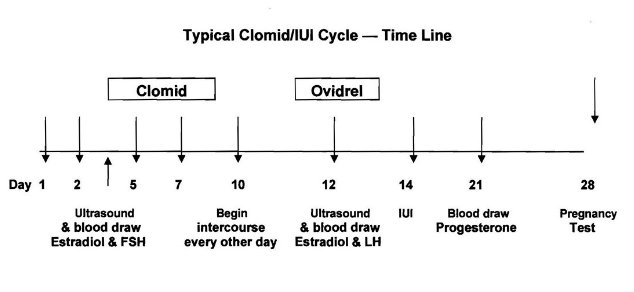
The last thing that we are going to touch on when it comes to Clomid is a rather strange fact. It’s the fact that sometimes, Clomid is used for men to boost their fertility. Clomid for male fertility is considered an “off label” use of the drug, which means it is used for something other than what it was designed for.
This is actually pretty commonplace when it comes to fertility drugs, as you will see later on in this article. For men who have low testosterone levels, poor sperm count or poor sperm motility, Clomid can actually be effective in correcting these problems in some cases.
In cases where men have varicoceles, or varicose veins in the scrotum or testicles, Clomid can be an alternative to surgery. Unlike with women, when men take Clomid, it needs to be daily over an extended period of time, such as for several months.
It can take quite a long time for Clomid to build up in a man’s body. It’s still not something that is very common, but don’t be too surprised if your man is prescribed Clomid during your fertility journey, as it is beginning to gain popularity in the fertility world.
2. Prescription Medications: Metformin
Remember earlier, when we were talking about medications being prescribed for “off label” uses? Well, here’s another one!
This time, we are talking about Metformin. Metformin is a very popular and commonly prescribed drug used for the treatment of diabetes.
Where Metformin is exceptionally effective for fertility is in the treatment of women with PCOS. PCOS is one of the biggest fertility issues facing women today, and it is super common, so it is really great news to hear that Metformin can be helpful for women suffering from this condition.
So, let’s move on to find out just exactly how this diabetes medication can be helpful to women who are trying to conceive.
You might have already been able to put this together in your mind, but let’s break it down. Lots of women who suffer from PCOS have problems with insulin resistance, meaning that the body produces too much insulin.
For women with PCOS, insulin problems translate to problems with reproductive hormones, although doctors still aren’t 100% clear on the connection.

For women with PCOS, too much insulin can equal too many androgens, or male hormones. As you might have suspected, too many male hormones are a very, very bad thing for women who are trying to conceive
Androgens equal lots of PCOS symptoms and fertility problems for these women. Androgens are the male hormones that cause the issues for PCOS patients such as excessive hair growth, weight gain, fatigue, acne, mood changes, insomnia, and pelvic pain. These symptoms, coupled with infertility can really make PCOS an insufferable condition for many women.
Metformin can really help to reduce insulin levels in women with PCOS, and can give them some relief from their symptoms, sometimes enough to be able to get pregnant.
Another really interesting thing about Metformin is that it has been shown to work pretty well in women who are Clomid resistant, meaning that Clomid didn’t work for them.
In some cases, taking Metformin for a few months before starting Clomid treatments really increased women’s chances of getting pregnant, which is great news.
This news gives these women a new hope and a new option to try to conceive, whereas before they might have felt like they did not have an option, or that things were starting to look hopeless. It’s really great to have an option like this for these women!
Metformin’s side effects are not usually very severe, usually mostly stomach related issues like diarrhea, upset stomach, bloating, and nausea. Most of these issues are very easily fixed, and again, the benefits usually outweigh the risks in these cases.
However, Metformin can have some negative effects on kidney and liver function in some patients. Women with a history of these types of problems should probably not use Metformin, or should be closely monitored by their doctor while doing so.
Here are some drawbacks to using Metformin for some women, but it is nice to see another “off label” medication being able to help women who are having trouble trying to conceive.
3. Prescription Medication: Letrozole
Carrying on with our pattern of “off label” medications, now we are going to talk a little bit about Letrozole. Letrozole is sometimes known as Femara, and it is a drug that is usually used to treat breast cancer.
Letrozole has been used for a little over 15 years now for fertility purposes, because it has been shown to have greater success rates than Clomid while having fewer side effects and less of a chance of conceiving twins or mutliples.
This is very exciting news for women who might have not had much success using Clomid in the past because they are Clomid resistant, or women who for another reason might want to try out another drug instead.
Much like Metformin, Femara has been shown to be effective in helping women who are Clomid resistant, meaning that their bodies have not responded to treatment with Clomid therapy.
Much like Clomid, Femara is taken on either days 3 through 7 or days 5 through 9 of a woman’s menstrual cycle. Again, much like Clomid, women would need to monitor themselves closely to determine when ovulation is getting ready to occur so that they can plan to have sex accordingly.
Doctors can do this through ultrasound or blood tests, and women can use at home ovulation predictor tests as well to see when their ovulation day is getting closer. This can be really great for women who need to know exactly when ovulation is going to occur so that the next steps in fertility treatment can happen at exactly the right time.

The way that Letrozole/Femara works is by reducing a woman’s estrogen levels in order to help her ovulate. Reducing a woman’s estrogen levels by any means can sometimes have different effects on the body, so there may be some side effects of Letrozole that need to be discussed before a woman gets started on this medication to boost her ovulation.
The side effects are similar to the ones that women get on Clomid, but might be a little more severe in some cases. Things like upset stomach, blurred vision, headaches, insomnia, fatigue, night sweats, and dizziness are said to be the main issues associated with taking this medication.
However, side effects of any kind are not super common, and most women report that the side effects that they do experience are not anything too crazy that can’t be handled easily.
As with all drugs that stimulate the ovaries, OHSS or Ovarian Hyperstimulation Syndrome is a rare but potentially dangerous side effect that might occur if the ovaries somehow become “too stimulated.”
Its side effects can be as simple as bloating but can even include chest pains and trouble breathing. This is one of many reasons why women are monitored so very closely when they are taking drugs or medications that stimulate the ovaries, because this potentially dangerous situation is to be avoided at all costs.
However, do not let the fear of potential OHSS keep you from seeking fertility treatments. Truth be told, this condition is very rare, and doctors are usually able to pick up on it well before it reaches dangerous levels, so women should not let this fear keep them from pursuing their dreams of becoming parents.
Doctors and medical experts are just getting started with looking at Femara as a treatment for ovulation problems, but so far, the news is very promising.

In many cases, doctors are actually saying that Letrozole might even be more effective than Clomid, especially for women who suffer from PCOS.
This is really great news, since Clomid has been the fertility drug of choice for many, many years. Having a new and possibly improved drug choice on the market for women who have not found success with Clomid is going to be a very great thing for women who are trying to conceive, and we are really very excited to see what the future holds when it comes to this.
It will certainly be very big news in the world of fertility health to see if Letrozole actually does end up taking over for Clomid as the fertility drug of choice.
These are the most commonly used and prescribed oral fertility medications on the market today. If you were unfamiliar with fertility medications before reading this article, you might be surprised to learn that these are the three most commonly used medications, and that two of these are actually used for “off label” purposes.
Without being familiar with fertility medications, it’s easy to think there are hundreds of different “fertility meds” out there and that women have a plethora of choices when it comes to which fertility medications they will try to get pregnant.
However, that is just simply not the case. These medications that we have just talked about are pretty much the only ones out there for boosting fertility with prescription oral pills, so definitely keep that in mind.

Once a woman has been through several cycles of whichever oral fertility boosting medications her doctor prescribes for her, without having any success, it will be time to move on to another plan of action.
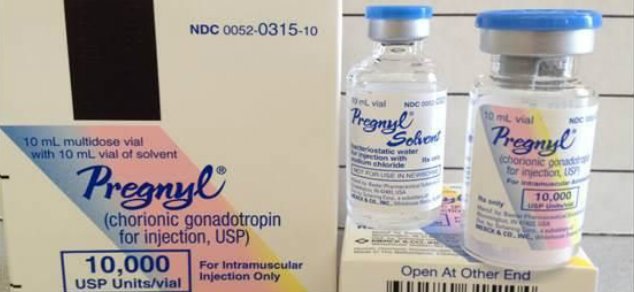
After oral fertility medications are deemed to be ineffective, fertility doctors will usually choose to move their patients over to another, more powerful drug choice. The next logical step is usually the use of injectable gonadotropins, which are fertility drugs that must be taken in the form of a shot, or injection.
These injections are more powerful and more potent than the oral fertility drugs that are used as a “first step,” but they can also come along with some more severe side effects.
Read on for more information about the different types of fertility injections and what they can help with.
1. Prescription Drugs: hCG (Human Chorionic Gonadotropin) Injections
The first injectable fertility medication that we are going to talk about is going to be hCG. The hCG hormone is the hormone that triggers the release of the egg.
As you might already know, hCG is the hormone that the body produces when it is pregnant, and it is the same hormone that at home pregnancy tests look for.
The presence of hCG is what will give an at home pregnancy test a positive result. For this reason, it is very important for women who are taking hCG injections to remember that as long as the drug is in their system, they will most likely be receiving a positive pregnancy test result.
Women should be aware of this as well as the possibility of a false positive test while taking these injections. HCG also helps the body to maintain high levels of progesterone, which are very important in sustaining a pregnancy.
HCG injections are sometimes used when there is a mature egg follicle in the ovary. The injection of hCG will “trigger” the body to mature and release the egg. This is very helpful for women who are undergoing fertility treatments and need to ovulate at a certain given time.

HCG is often used in conjunction with other fertility medications such as Clomid for the best results possible. A woman’s doctor will need to closely monitor her to make sure that the hCG injection is given at the right time during her monthly cycle, because, as we mentioned before, timing is really everything when it comes to these drugs.
HCG is sold under brand names such as Novarel, Ovidrel, and Pregnyl, so if you hear these names being mentioned, you can be aware that this medication is actually hCG.
2. Prescription Medication: hMG (Human Menopausal Gonadotropin) Injections
You might have heard of this injection drug being sold under the brand names of Repronex and Pergonel. This one is an injectable gonadotropin that combines two hormones, LH (Luteinizing Hormone) and FSH (Follicle Stimulating Hormone).
This injection medication is actually derived from the urine of postmenopausal women who make this hormone in excess. This medication can be extremely beneficial in regulating the ovulation cycle and also for stimulating egg development.
It is not actually one of the more commonly used injectable gonadotropins, but is still important to mention in this article.
3. Prescription Medication: FSH (Follicle Stimulating Hormone) Injections
FSH injections are pretty straightforward, as their name indicates exactly what it is that they do. FSH injections are sold under the brand names of Bravelle and Menopur, among others.
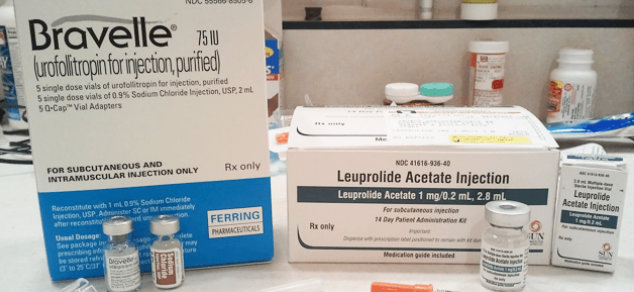
FSH is much like hMG, except for the fact that it contains only Follicle Stimulating Hormone, whereas hMG also includes luteinizing hormone as well. FSH is given to help the follicles develop properly.
This medication is used solely to stimulate growth in the ovaries, and may be combined with other medications as well if doctors believe that will be beneficial.
4. Prescription Medications: GnRH Agonists (Gonadotropin Releasing Hormone Agonists) Injections
As you might have been able to decipher from just the name of this medication, it is one of the more complicated injectable gonadotropins that is on the market today.
It actually works sort of in an opposite manner of the injectable gonadotropins that we have already covered.
You see, GnRH Agonists actually work by shutting down the production of things like LH and FSH in a woman’s body. This, in turn, helps to lower a woman’s estrogen levels.
The way this works is by temporarily increasing hormone production, and then subsequently shutting hormone production down once the body gets the memo that it is making too much.
By doing this, doctors can better control a woman’s egg development. These drugs are usually used along side of other fertility treatment methods, such as IVF or IUI, which we are going to talk about as we go on further in this article.
Things to Know About Injectable Gonadotropins
Now that we have talked a little bit more about what injectable gonadotropins are and what they can do for the body, we should talk a bit about their side effects and other things to know.

Gonadotropins can be exceptionally beneficial for women who have not had much success with oral fertility medications. They can really give doctors virtually total control over a woman’s reproductive system, and can help to manipulate the reproductive system into doing exactly what it needs to do in order to help achieve a healthy pregnancy.
Sometimes, gonadotropins are used on their own, but other times, they are used in conjunction with other assisted reproductive techniques, depending on each woman’s particular case and what the doctor thinks would be the best course of action for her.
Women will usually be trained by their doctor or nurse to learn how to give themselves their own injections.
This allows the injections to be done at home, and means that a woman will not have to travel to her doctor’s office each time that she needs an injection.
It is also important to note that the side effects of gonadotropins are usually much more severe and much more pronounced than the side effects of regular oral fertility medications.
This is because these injections are much more powerful than their oral counterparts, which can be both a good and a bad thing. For example, the instances of OHSS (Ovarian Hyper Stimulation Syndrome),which is a potentially dangerous complication, are much higher when using injection medication as opposed to oral medications.
The chances of OHSS when using injectable gonadotropins is about 10 to 20% per cycle, so women who are using these medications will need to be closely monitored by their doctor.

The chance of having twins or multiples also increases dramatically when taking injectable gonadotropins as opposed to oral fertility medications. Some studies have even shown that women have as much as a 30 percent chance of conceiving twins or higher order multiples when taking these medications
In comparison to about a 3 to 4 % chance of having twins naturally, or a 10% chance of having twins while on Clomid, it’s easy to see that injectable gonadotropins really do increase the chance of having twins quite dramatically.
It is also important to note that gonadotropins are also going to be more expensive than oral fertility medications, especially for women whose insurance does not cover those types of treatments. The cost per cycle of gonadotropins for fertility can range from anywhere between $500 to upwards of $5000 per cycle.
Yes, that is a big range, but the lower end of the scale is for just the injection only. The higher end of the scale would include everything such as doctor’s visits, blood work, ultrasound monitoring and all of the other “bells and whistles” that go along with these types of fertility treatments.

Now that we have covered the most common and popular types of fertility related medications, we are now going to cover the most common and popular types of fertility related treatments. Many of these types of treatments will be used alongside the fertility medications that we mentioned earlier. Now, let’s get started.
1. IUI: Intrauterine Insemination
Chances are you have probably heard of Intrauterine Insemination before, as it is one of the oldest forms of assisted reproductive technology out there, and has been around for quite awhile. The premise of IUI is pretty simple- sperm is inserted inside of a woman’s uterus in order to help fertilization to occur.
It’s a great option for couples who have sperm motility issues, or problems with how the sperm move through the body, since it is giving them a head start to get to where they need to go. IUI is also a great option for women who might have cervical mucus that is harmful to sperm or a non sperm friendly vaginal environment.

IUI is also a great option because it is much more economical and affordable when compared to treatments like IVF. It’s also a much less invasive procedure and overall process, which some couples prefer when opting for fertility treatments.
The process of IUI is pretty simple in and of itself, and involves the use of the same ovulation stimulating medications that are used in IVF, however not all women will have to take these medications. Once it reaches the time of a woman’s cycle that her ovulation day is eminent, doctors will decide that it is the right time to do the IUI procedure. This is done by using ultrasound monitoring, and sometimes blood work or ovulation predictor tests.
Once the timing is right, a sperm sample will be collected and washed. The washing process is done to separate the semen from the seminal fluid and give a better chance of success, since the maximum number of sperm cells will be inserted. Then, a catheter is used to transfer the sperm to a woman’s uterus. IUI is usually a pretty quick process, and most women agree that it is painless as well.
However, it is important to note that the success rates from IUI are only about 20 % per cycle, which is significantly lower than treatments like IVF.
It is important for couples to take this into consideration when they are deciding on which treatment plan will work best for them and their particular situation.
The cost associated with IUI is usually one of the most enticing factors when it comes to the reasons that couples choose this assisted reproductive method.
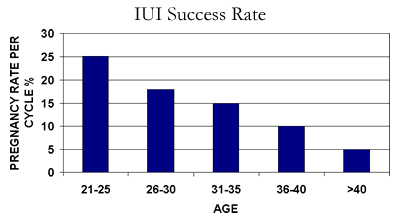
While the cost of In Vitro Fertilization can run upwards of $15,000 per cycle, IUI runs at only about $800 to $900 per cycle.
As you can see, the cost difference is very dramatic and this is probably the number one reason that some couples choose to start out with IUI instead of jumping straight into IVF or other costly treatments.
It is important, however, to remember that there will most likely be added costs associated with IUI to cover doctor’s visits, blood work, and other related costs. Couples definitely need to be sure of all related costs, and what will be included versus what will be extra, when they sign up for fertility treatments, because unexpected or unplanned costs can really be damaging to a couple’s budget, especially when it comes to something as expensive and important as fertility treatments.
2. IVF: In Vitro Fertilization
IVF, or In Vitro Fertilization is the most common and most popular type of assisted reproductive fertility technique that is out there today. Simply put, with IVF, an egg is extracted from a woman, sperm is collected from her partner, and the sperm and egg are put together and fertilized in a laboratory setting.
The fertilized embryo is then transferred back into a woman’s uterus, where it will hopefully implant and grow a healthy baby. There are many different situations and medical conditions in which a woman can be a viable candidate for using IVF therapy as a means to get pregnant. IVF has grown to be a super popular option for couples needing fertility help to get pregnant and have a baby.
The process, while it sounds simple above, is actually quite complex and there are several different steps involved to get to the end result. First of all, women will take a fertility medication, either an oral medication or an injectable gonadotropin in order to stimulate her ovaries into producing eggs.
It is important that the ovaries be stimulated to produce more than one egg, because most likely some of the eggs will not be viable. Women are closely monitored during this process via ultrasounds and blood tests to check on their hormone levels and to see when it is time to progress on to the next step.
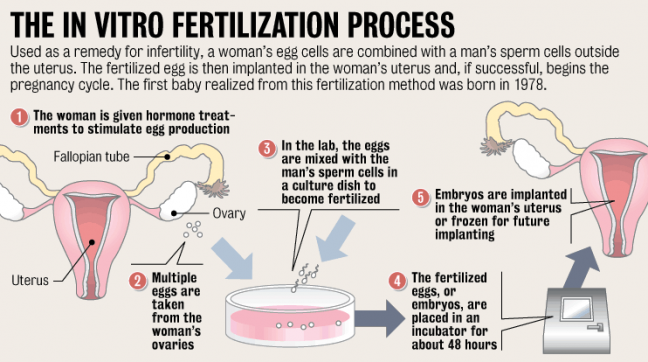
When it is time, the eggs will be retrieved from the woman’s body using a simple, although sometimes uncomfortable, surgical procedure involving long, thin needles. This process is normally done at a doctor’s office and is not too painful.
Next, a sperm sample will be collected from the male partner, and the egg and sperm will be combined. This is done in a lab setting, and the egg and sperm are left in a lab dish in order to encourage fertilization.
Doctors will closely monitor the sperm and the egg during this process to see if and when fertilization will occur. Once fertilization does occur, the fertilized eggs have then become embryos. Once this process has been completed, doctors will usually wait for just a few days before beginning the process of transferring the eggs back into the woman’s body.
The process of transferring the eggs back into a woman’s body is actually quite simpler than many people would expect. Using a catheter, the embryos travel back into the woman’s uterus, where doctors and couples both anxiously await to see if they will implant into the uterine wall.
Most of the time, the embryo transferring process is painless, although some women do experience a small level of discomfort, sort of like the cramping and pain associated with a monthly period. Most women admit that the pain was nothing like what they expected, and the whole process is usually described as quite easy and painless for many women, which really is great news.
The side effects associated with IVF therapy are usually not too bad, although, of course, there is that slight chance that a woman will develop OHSS, as we talked about earlier. Doctors will closely monitor women during this process to watch carefully for any potential issues.

Of course, the chance of having twins or higher order multiples is also higher for women who are undergoing IVF therapy as well. So, just how successful is IVF therapy?
Studies show that between 40% and 45% of women who are under 35 and undergo IVF therapy will get pregnant within one cycle of starting IVF.
This success rate drops, obviously, as women get older, sitting at around 35% for women between ages 35 and ages 37, and around 25% for women ages 38 to 40.
For women over 40, the success rate of IVF is usually only around 15% for any given cycle. This is normal, as women’s fertility decreases with age.
Therefore, the earlier that a couple seek help for their fertility issues and decide to begin fertility treatments, the better off they will usually be and the better success they will get. Age is definitely something that needs to be taken into consideration when it comes not only to fertility treatments but to conceiving overall.
This is because, simply put, a younger woman is more likely to be successful at trying to conceive or is more likely to have successful fertility treatments when compared to women who are older.
The cost of IVF is something that you have probably heard about before. It is no secret that fertility treatments, especially those here in the USA, are exponentially expensive. There are very few insurance policies that cover IVF therapy, so usually, couples have to pay out of pocket for the entire procedure.
As of right now, the average cost of one cycle of IVF runs about $15,000.
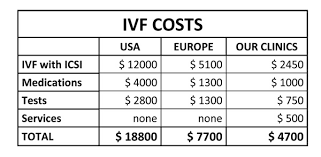
Some clinics might have the procedure for upwards of $20,000, while some facilities might offer discounts of around $10,000. However, this does not include the cost of medications.
However, it is so very important that couples go into IVF treatment knowing the full cost. Make sure to ask all of the questions at your fertility clinic in order to know what is included and what is not included. One thing that couples do not want is any unexpected costs when it comes to fertility treatments.
It is super important to really go over everything related to costs with the fertility doctor and fertility clinic before ever getting started so that you do not end up with something crazy that you were not told about up front.
3. ICSI: Intracytoplasmic Sperm Injections
The next type of fertility treatment that we are going to talk about is ICSI, or Intracytoplasmic Sperm Injections. For couples who have sperm related fertility problems, ICSI can be a great choice. In many cases, ICSI is used alongside of IVF treatments to improve the chances of succeeding.
During ICSI, a sperm sample is obtained from the male patient, either through masturbation or by removing the sperm from the testicle by a small incision. This can be especially helpful when men have blockages in their reproductive system or other similar problems.
Much like with IVF therapy, women will need to take medication to stimulate the ovaries and help the eggs to mature. Doctors will closely monitor women to make sure that their eggs are fully mature when it is time.
Then, in some cases, an hCG trigger shot may be needed in order to trigger ovulation and to help it occur at the right time. Then the eggs will be retrieved much like with typical IVF therapy.
This part is pretty typical, and just like the other egg retrieval processes, is pretty quick and painless and can be done in a normal doctor’s office without the use of any anesthesia. Most women are actually quite surprised with how easy the egg retrieval process actually is.

Where ICSI is different from IVF is with the process of the egg getting fertilized. You see, with typical IVF therapy treatment, the sperm and the egg are placed near each other within the lab dish, and there they are left alone to try to become fertilized on their own. However, with ICSI, things are done differently.
With ICSI, a single sperm is individually placed inside of each egg. This offers a much better chance of the eggs becoming fertilized, and can be extremely helpful if there are issues with sperm motility, or how the sperm is able to travel to the egg.
There are many different reasons that a couple might choose to use ICSI instead of traditional IVF or another method of fertility treatments, and ICSI can really provide a more detailed approach to conception that some couples really do need.
The success rates of ICSI are even greater than the success rates for regular IVF, since there is so much detail involved when it comes to this procedure.
The great news is that fertilization occurs in somewhere around 90 % of cases where ICSI is used.
This can be incredibly helpful for couples who have sperm related issues. The cost of ICSI, however, is still pretty high. Technically, ICSI is an addition to IVF therapy, so it is usually just an “add on” cost to the regular cost of the IVF.
In most cases, choosing to do ICSI therapy will add around $2000 to the cost of IVF. However, the success rates are really good for this type of therapy, so couples should consider that when they are considering the extra costs, and realize that in some cases, the extra cost could really help in their particular situation.

Two other assisted reproductive techniques that we are going to talk about are GIFT and ZIFT, which stands for Gamete Intrafallopian Transfer, and Zygote Intrafallopian Transfer, respectively.
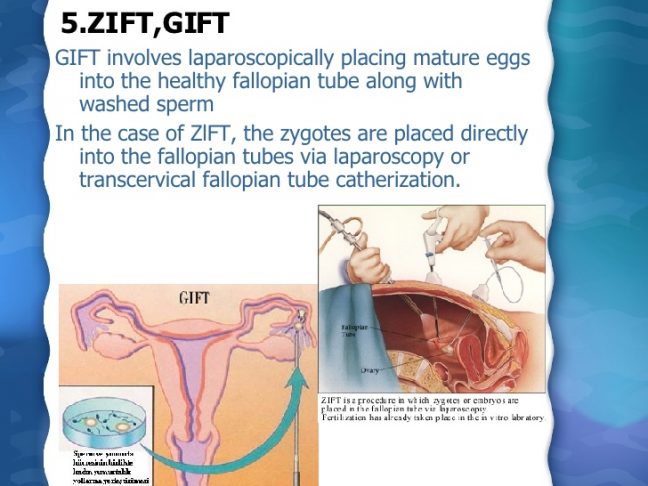
During GIFT, the egg and the sperm are combined together in a lab, and are then inserted back into the fallopian tubes so that fertilization can happen in a natural way inside the body.
However, since IVF and ICSI have become so popular in recent years, GIFT has sort of fallen by the wayside. These methods are not as popular as they once were, simply because we have better technology now with the use of IVF and couples are able to really have better success rates using other options.
The other technique that we are going to talk about is ZIFT, or Zygote Intrafallopian Transfer. During ZIFT, just like with GIFT, eggs and sperm are mixed together in a lab setting. However, with ZIFT, doctors go through an extra step to make sure that the eggs are fertilized and become embryos before they are placed into the fallopian tubes.
Much like GIFT, ZIFT is not usually used anymore since IVF has become so popular and so successful. Somewhere around 25% of women will get pregnant using GIFT, and about 22% of women who use ZIFT will get pregnant, so the odds are pretty similar to the odds of using IVF alone.
Neither one of these methods are used very much anymore since we have so much new reproductive technology out there that is just simply easier and more effective. However, they are important to mention because in prior years these options were much more popular for assisting with fertility.
Now that we have more options available in the world of reproductive technology, we might not need these methods all too often, they are still good options for couples in certain fertility situations. Plus, these methods that are not used as often anymore really goes a long way to show us how far we have come in fertility medicine and technology and how much things have improved along the way.

If a couple has tried other means of assisted reproductive techniques to get pregnant and they haven’t been successful, it is most likely time to move on to other methods. For women who have problems producing and maturing eggs on their own, donor eggs and embryos can be a good option.
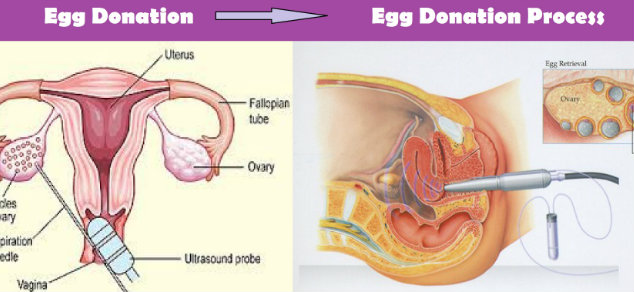
With using donor eggs, another woman’s eggs are mixed with the intended father’s sperm and then later, the embryo is inserted back into the patient’s body. This is a really great option for women who simply cannot produce eggs anymore or for women whose eggs are not the best quality and might not be able to be used to get pregnant.
Donor eggs are really special because it is another woman’s generosity and gift that is making motherhood possible for a woman who otherwise might not ever be able to experience it.
The entire process is much like IVF, in that the egg and the sperm are combined together in a lab setting to allow them to be fertilized. However, using donor eggs can be a long process, and for some women, the fact that they are having a baby that is not biologically theirs can be an issue that takes some time to come to terms with.
However, for women who have problems with their own eggs, sometimes donor eggs or embryos are one of the only remaining options. It really is amazing that we have this option available as a way to help women get pregnant.
Think back to a few short years ago when donor eggs were not even an option and the thought of doing something like using donor eggs was just crazy. The ability to even do this and use donor eggs as a method to get pregnant is nothing short of amazing, and it really speaks a lot to our medical technology today and how amazing things are in this day and age.

The cost of using donor eggs or embryos can be really very high for most couples to afford.
The cost of a fresh donor egg can run about $25,000, and that is including the compensation that is given to the donor as well.
The success rate of using donor eggs is usually about 50 % per cycle for using fresh donor eggs, but can be a little bit lower for couples who choose to use frozen eggs or embryos.
There are so many different steps involved with using donor eggs, it can be a little bit of an overwhelming process sometimes. For example if a woman is using fresh donor eggs, both she and the egg donor will need to take medications to make sure that their cycles are in sync.
Both women will need to be closely monitored, if a couple chooses to use fresh donor eggs, so this is something to keep in mind. However, there is also the possibility and the option to use frozen donor eggs and embryos as well, so that can sometimes cut down on the costs just a little bit for couples who are concerned about the money aspect of this.
For women who are over age 45 and trying to conceive, donor eggs or embryos are usually the only possible option, aside from using a gestational surrogate.
In fact, more than 75% of women over age 45 who are trying to conceive will have to use this method to have a baby. For many couples, actually finding or choosing the egg or embryo donor can be the hardest part.
Many fertility clinics or treatment centers actually have programs in place to help couples choose the right donor, but in some cases, women might already have a donor in mind, such as a family member or close friend.
The actual process is much like IVF, except that the eggs are removed from the donor’s body, then fertilized in the lab, and then transferred back into the patient’s body. While it sounds complicated, the entire process has been perfected by the doctors who perform it, and it’s all actually quite simple these days.
It might be a little bit expensive, but it’s not really a difficult process at all, and it’s not even hard on the body for the woman who is undergoing the treatment.

Another option for couples who have not been successful in conceiving by any other means is by using surrogacy or a gestational carrier. There are two different ways to go about doing this.

The first way is traditional surrogacy, where the woman who is acting as the surrogate uses her own egg to carry the baby. The sperm of the male part of the couple who is wanting to conceive is transferred to the surrogate, so technically the surrogate is the biological mother of the child, although of course, the woman will be the legal mother of the child.
However, as you might be able to imagine, there are sometimes some legalities surrounding surrogacy, and for this reason, traditional surrogacy is not often used anymore, and the use of gestational carriers have become much more common.
Gestational carriers, on the other hand, are much different. In the case of a gestational carrier, the “surrogate” or gestational carrier, acts as literally, just a carrier for a couple.
The egg from the woman wanting to conceive and the sperm from the male wanting to conceive are collected and combined in a lab setting, much like with IVF therapy. Then, that embryo is transferred to the gestational carrier, who will carry the baby to term.
In recent years, gestational carriers have become much more common than traditional surrogacy, because the woman having the baby actually has no genetic ties to the baby.
This makes for much less legal trouble surrounding the entire process, and it’s usually much better for all parties involved if the intended parents are the ones with the genetic ties to the baby in these cases. It just cuts down on a lot of potential legal issues and red tape, and can be much easier way to go about things than by using a traditional surrogate.
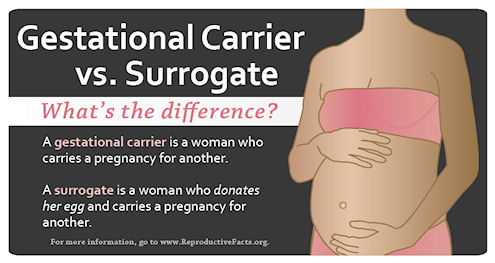
Surrogacy and Gestational Carriers have given so much hope to couples who would not otherwise be able to have a baby. Women who have had medical problems in the past and do not have the right “equipment” so to speak to carry the baby are actually able to become parents by using a surrogate or gestational carrier.
Gay couples are able to use one man’s sperm and a donor egg to have a baby of their own. Sometimes, close friends or family members decide to become surrogates for someone very close to them to help them carry their baby and achieve their parenting dreams.
Other times, if a friend or family member is not available to carry a baby, couples can use a surrogate agency. These agencies are sort of like adoption agencies, and can act as a “middle man” to help connect couples with surrogates or gestational carriers.
One thing that can keep many couples from being able to use a surrogate or a gestational carrier is the cost. In the United States, the average cost of using a surrogate or gestational carrier is nearly $75,000, all costs included.
Sometimes, when using a surrogacy agency, the costs can reach upwards of $150,000.
It is a very crazy number and can be a little bit hard to believe that it can cost this much just to be able to have a baby, but this is the reality. However, it’s really a great thing that we have the possibility of using gestational carriers or surrogates, since it gives a real chance to couples who otherwise would not have the chance to become parents.

As you can see, there are so many different fertility medications and fertility treatments out there today, there really is something that can be helpful to just about any couple who wants to have a baby.
The costs vary greatly depending on which option a couple chooses to go with, and the costs can run from very affordable to really outrageous and crazy costs, more than the cost of buying a house for some of us. It really does just go to show how precious it is to be a parent, and how important it is for some couples.
Fertility treatment is big business, and no matter how high the prices are, people are willing to pay whatever it takes in some cases just for the chance of becoming parents.
You can start at the beginning of this article and see the very beginning, where over the counter, “cheap”, and easy to use fertility pills can give fertility a boost, all the way up to the point where couples have to take out loans to undergo fertility treatments just to give themselves a shot at becoming parents.
It’s also important to remember that none of this comes with a guarantee. From taking a small dose of Clomid, up to using IVF, no one can guarantee that it will work, and no doctor can promise a couple a baby.
It really is one of those things that no one can control, and couples really need to keep in mind that when they are taking fertility pills or undergoing fertility treatments, that they are really just paying for the chance to get pregnant, not a guarantee that they will be able to get pregnant.

It is important to remember that not very many years ago, we didn’t have options when it came to fertility, trying to conceive and getting pregnant. Simply, some people could have babies and some could not. Since reproductive technology has come into play, so many things have changed and so many couples have been able to reach their dreams of having a family.
Of course, things are still not perfect, and there is still a long way to go. There are still issues to work out, and treatments that don’t work no matter how much money a couple puts into it or how badly they want it. However, we cannot forget just how blessed and lucky we are to even have these opportunities available to us.
If you and your partner are trying to conceive and have had trouble doing so naturally on your own, it might be the time to start trying to consider fertility medications or treatments.
Please remember that doctors recommend for women under age 35 to try to conceive for one year and for women over age 35 to try to conceive for six months on their own before seeking fertility help.
There are so many options out there to help couples as well. You might not need full on intensive IVF treatments, a simple dose of fertility medication might work in your particular case. It all depends on the couple and their own medical and health needs. Everyone is different and not all couples will respond to the same types of medications, therapies and treatments. Fertility medicine is definitely not a one size fits all type of practice.
For couples who are struggling with their fertility and their desire to conceive and start a family, please keep going and do not give up. Do not be discouraged when things are not looking like they are going to go your way.
There are so many different options out there and couples can really find something that will work for them in their own particular case. Do not be worried or discouraged, and reach out to your doctor, or perhaps a fertility specialist or clinic. Some couples find it helpful to see a counselor or therapist during this time, since it can be a trying time for a relationship as well.
Please keep these things in mind as you enter into your fertility journey, and above all else, keep a positive attitude regarding these things.


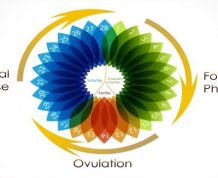







Comments